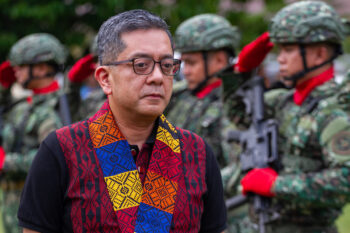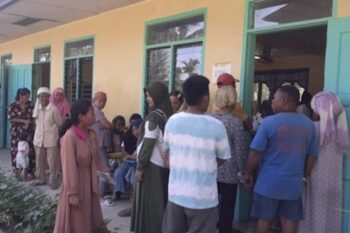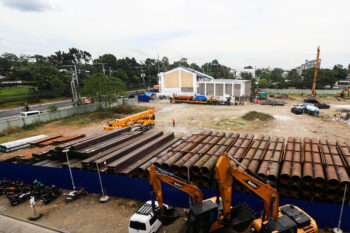I. Open-Ended Roadmap
GENERAL SANTOS CITY (MindaNews/25 April) – “Transition” as used here specifically refers to the period of establishing the governmental institutions, mechanics and modalities for the entrenchment of Bangsamoro as provided in Framework Agreement on Bangsamoro. This spans the period from the abolition of the Autonomous Region in Muslim Mindanao to the inauguration of Bangsamoro on or before June 30, 2016 under the ministerial government formed by the first Bangsamoro Legislative Assembly.
“Transition that will work” means not just a mere transfer of Muslim autonomy from the ARMM to Bangsamoro but preparing to make Bangsamoro the political entity that will solve the Bangsamoro Problem. The transition must be based on sound organic law or charter – the Basic Bangsamoro Law. The period must allow the time and resources necessary for Bangsamoro Transition Authority to ensure the soundness of the governmental institutions and for the mechanics and the modalities to gel.
Bangsamoro must start on the right foot on firm ground. Recent developments pertinent to the entrenchment of Bangsamoro call for an honest-to-goodness assessment of the prospects.
FAB Roadmap
The FAB, which provides the framework for the entrenchment of Bangsamoro, has a 15-step “Roadmap to the Creation of the Bangsamoro Autonomous Political Entity” to follow. This started with the signing of the FAB on October 15, 2012 and will end with the replacement of the BTA by the regular Bangsamoro government as President Aquino III steps down on June 30, 2016.
After the “Signing of the FAB” by both parties (1), the roadmap may be divided into “Phases” to easily follow the stages of transition:
Phase A: Completion of the FAB (Step 2). Parties adopt Annex on the Transitional Arrangements and Modalities (the illustrated roadmap does not mention the annexes on power-sharing, wealth-sharing and normalization but they should be on this Step) (2)
Phase B. Drafting of BBL (Steps 3, 4, 5). Transition Commission (TransCom) is formed via Executive Order (EO) (3); Congress passes resolutions supporting the EO (4); TransCom drafts Bangsamoro Basic Law bill (5);
Phase C. Enactment of BBL Draft into law (Steps 6, 7, 8, 9, 10). Bill is submitted to
Congress (6); Bill is certified urgent by the President (7); Congressional action on the bill (8); Bill submitted to the President for approval (9); President signs the bill into law (10);
Phase D. Ratification and Promulgation of BBL (Steps 11, 12). Plebiscite is held for the ratification of the law (11); Promulgation and ratification of the Bangsamoro Basic Law (12);
Phase E. Establishment of Transition Government (Steps 13, 14). Bangsamoro Transition Authority is created. ARMM is deemed abolished; all devolved authorities are vested in the Bangsamoro Transition Authority (13); Ministerial form and Cabinet system of government will commence once the Bangsamoro Transition Authority is in place (14);
Phase F. Final Entrenchment of Bangsamoro (Step 15). Bangsamoro Transition Authority is replaced upon the election and assumption of the members of the Bangsamoro legislative assembly and the formation of the Bangsamoro government (15).
Phase A complements FAB with the Annexes to form the Comprehensive Agreement. Its agreed two-month time frame, November – December should not be counted as part of the Transition Period.
Phases B, C and D are the Pre- Transition; no transition or devolution of government takes place. Hence, the ARMM continues functioning. Neither the FAB nor EO 120 has set a time frame of Pre-Transition; however, MILF says the life span of the Transcom is two years, 2013 and 2014.
Phases E and F are the Transition Proper; governmental functions are devolved to the BTA which establishes the ministerial form of government. Hence, the ARMM is abolished. One year and a half — 2015 and January to June 30, 2016 — is Transition Proper.
Haphazard Formula
The FAB roadmap has no fixed time frame for each of the steps after Step 1 to Step 14. A roadmap with open-ended time frames set within the fixed term of the president is hard to understand. This is open to time-overrun, a formula of haphazardness. The Bangsamoro must be established by June 30, 2016. A time-overrun in one step will mean less time for the next steps. This can be detrimental to the accomplishment of each step; ultimately, it can mean a haphazardly installed Bangsamoro.
Without fixed time schedules imposed, it appears that the accomplishment of each step is premised on “best efforts”; and, that by “best efforts” all will be well by the time the president steps down on June 30, 2016. Will the roadmap turn out as presumed?
President Aquino III should have learned from his mother. On September 16, 1988, the Mindanao Regional Consultative Commission (MRCC) presented to President Corazon C. Aquino the draft of the charter of the ARMM. According to some delegates, with only 150 days to deliberate on the draft, they were unable to complete it for the lack of time.
The first President Aquino said: “I realize that you have not been given as much time and resources as the complexity of the work requires. But we have to live with given constraints. Congress has established a clear time frame within which you have to deliver your results. You must realize that Congress must set firm deadlines because Congress itself is bound by the Constitution to draft an organic act within a fixed schedule.”
She sympathized with admonition, saying between the lines: “It was incumbent upon you to overcome the constraints.”
From November 2012 to June 30, 2016, there are 44 months. With the Parties by their “best efforts” agreeing to finish the Annexes by end of December 2012, that leaves 42 months to be subjected to “firm deadlines” – 24 months for Pre-Transition, 18 months for Transition Proper.
Fix to 6 months the drafting of BBL (Step 5); to 12 months the enactment of BBL (Step 7); and, to 4 months the plebiscite and promulgation (Steps 11, 12). That leaves two months for Steps 3, 4 of Phase B and 6, 8, 9, 10 of Phase C which would require only days to accomplish. In EO 120, Transcom should have been given a “firm deadline” to finish drafting the BBL.
Immediate Trouble
Without “firm deadlines”, trouble reared up right in Phase A. The Panels promised to give their “best efforts” to finish the Annexes in November and December 2012. It is now four months overdue, preventing Transcom from starting the drafting of the BBL. Even if the Annexes are completed next month, Transcom can start work proper only in July; in June the Panels will cobble the Comprehensive Agreement out of the FAB and the Annexes. That would be eight months on Phase A, a six-month time lag.
The nagging question: Can the Parties sign the Annexes in May?
However, for the Parties to commit by “best efforts” to finish the annexes in two months was a most reckless assumption. After MILF’s rejection of the “3 for 1 Formula” in August 2011, the negotiation shifted to the Leonen approach: Focus first on what we can agree; set aside our fundamental differences for later discussions. The FAB came out of the first, 13 months later in September 2012; the Annexes were the fundamental differences set aside.
It took 13 months to agree on “what we can agree”. Would it take two months only to resolve contentious issues in “our fundamental differences”? Logical?
The acid test of Government and MILF is how to construct a reliably strong, beautiful edifice, the Bangsamoro, within the last three years of the Aquino III presidency despite worrisome signs emerging from the haphazard roadmap and Leonen formula.
(To be continued: II. Lying Ahead)
(“Comment” is Mr. Patricio P. Diaz’ column for MindaViews, the opinion section of MindaNews. The Titus Brandsma Media Awards honored Mr. Diaz with a “Lifetime Achievement Award” for his “commitment to education and public information to Mindanawons as Journalist, Educator and Peace Advocate.” You can reach him at patpdiazgsc@yahoo.com.)







